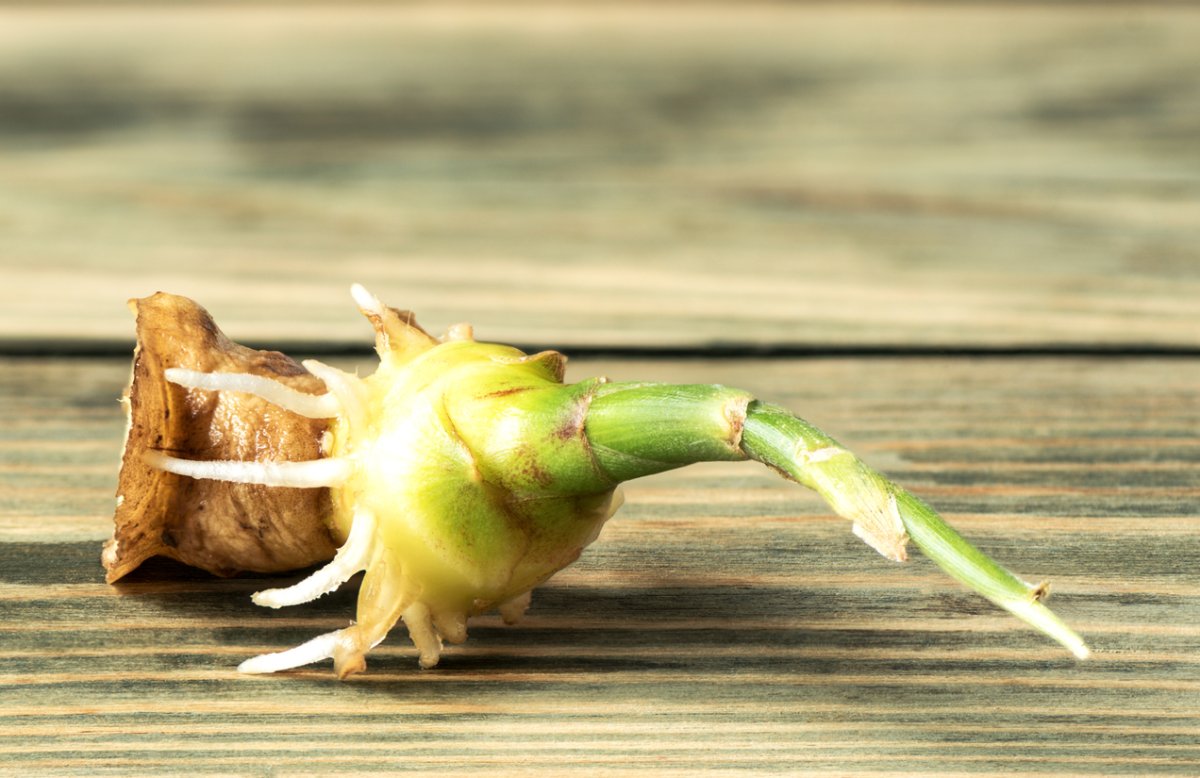

We may earn revenue from the products available on this page and participate in affiliate programs. Learn More ›
Ginger rhizomes, more commonly known as ginger roots, come from the flowering plant Zingiber officinale. Because it’s a tropical plant, ginger can be tricky to grow outdoors in much of North America, but it is possible. And even if you live in one of the cooler USDA hardiness zones, where outdoor cultivation is highly unlikely, take heart: Ginger is fairly easy to grow in containers indoors.
Ginger has been used in cultures around the world in both cooking and alternative medicine; it’s a digestive aid that’s also known for its anti-inflammatory and anti-nausea properties. This fragrant ingredient is a staple in Indian, Chinese, Korean, Japanese, and Vietnamese cuisine and is used to make tea and season stir fries, curries, and soups.
Learn more about how to grow ginger at home, no matter where you live.
Growing Ginger at a Glance
Common Name: Ginger
Scientific Name: Zingiber officinale
Hardiness Zone: 9 to 12
Soil: Loamy, loose, and rich
Light: Full day of filtered light
Water: Consistently moist
Food: Two or three times per growing season
Propagation: Rhizome division
Safety: Nontoxic
Growing Ginger
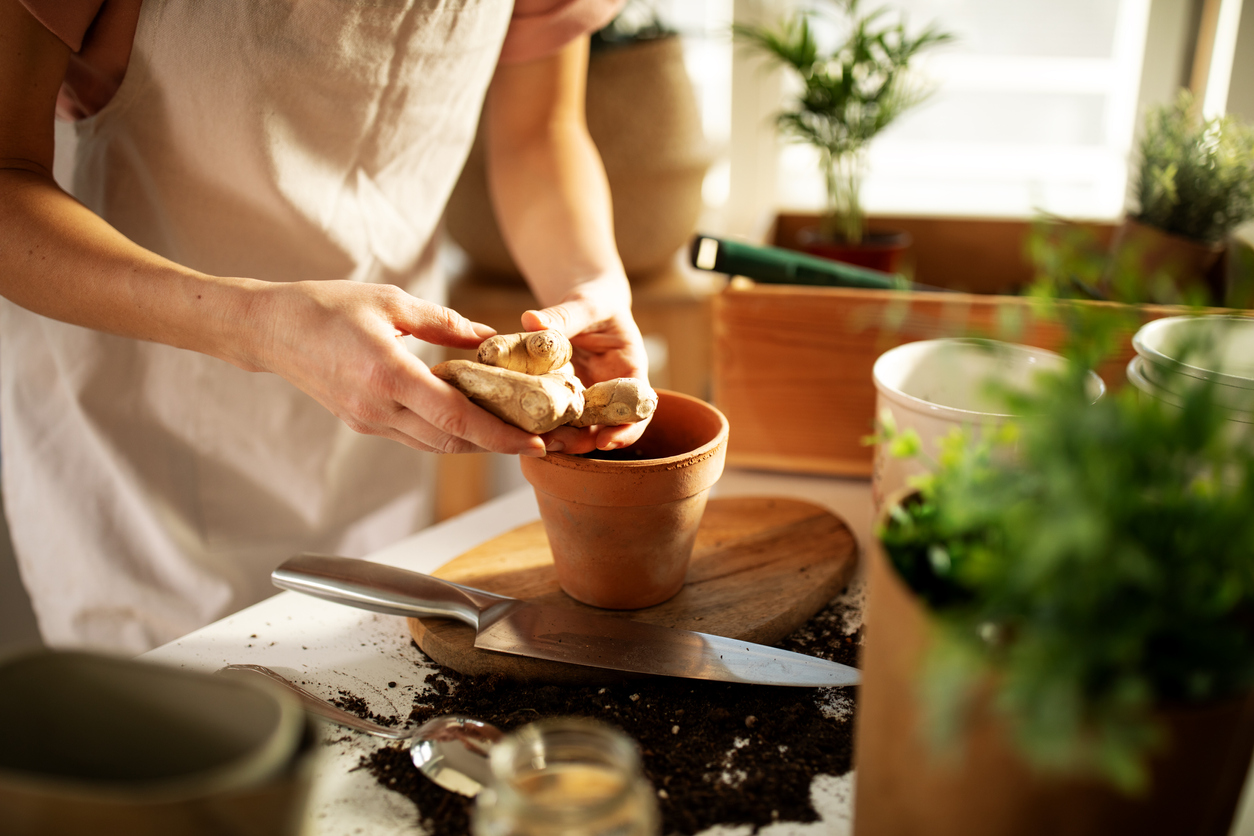
Though this guide explains how to plant ginger outdoors, it can also be grown indoors, in a pot or planter. The same general principles apply when it comes to planting ginger indoors. Keep in mind that ginger has a long growth cycle, about 10 months.
- Gardeners in most parts of the United States should plant ginger in early spring, after the last frost. Ginger won’t tolerate temperatures below 50 degrees. Some gardeners start ginger inside in pots and then transplant it outside when temperatures warm up.
- Purchase “seed” ginger from an online seed company, local nursery, or simply from a grocery store—organic is best.
- Cut the seed ginger roots into 1- to 2-inch-long pieces, each containing two or three nodules; allow pieces to dry for 24 to 48 hours before planting.
- Plant the ginger pieces in a pot or directly in a garden bed in loamy soil that is loose and fertile. If planting in a pot, choose one that is at least 12 inches deep and offers ample drainage.
- Plant pieces 8 to 12 inches apart, 2 to 4 inches deep, with the nodules pointing upward.
- Spread a layer of mulch on top of the soil to keep it warm. The mulch also helps retain soil moisture.
RELATED: 15 Superfoods That Are Easy to Grow Yourself
Select Your Soil
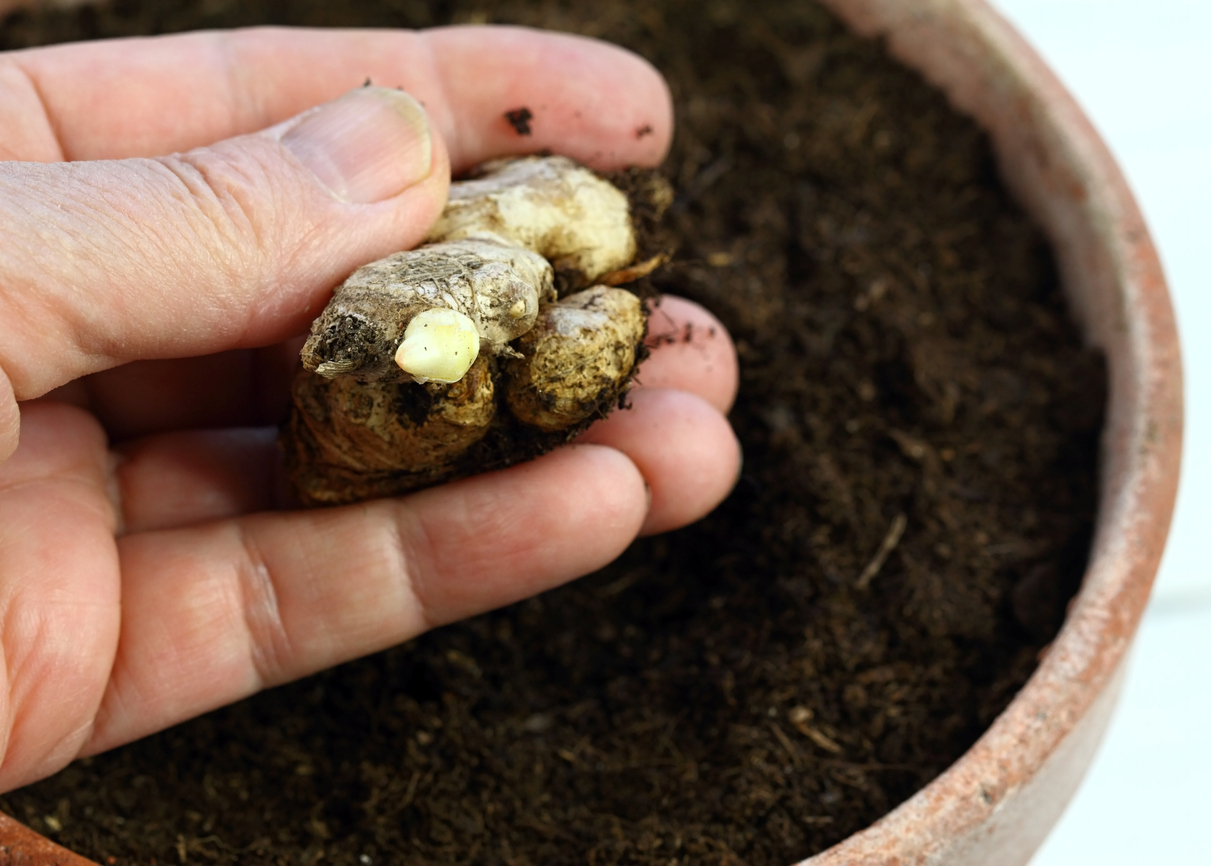
The ideal soil for growing ginger root is one that is loamy—containing equal amounts of sand, silt, and clay—and is loose and rich in organic matter. The soil’s pH should be slightly acidic to almost neutral (5.5 to 6.5). The soil should be warm, between 71 and 77 degrees Fahrenheit.
Choose the Right Light
Gardeners in more northern zones should choose a planting area that gets 2 to 5 hours of morning sun per day, while those in southern climes can choose an area that gets filtered sun all day.
If you’re growing ginger indoors, place the pot in a warm spot that gets plenty of indirect light.
Water Your Ginger
Ginger thrives in moist soil. Water the soil immediately after planting. Continue to keep the soil moist by watering it daily before it has the chance to dry out. This replicates the plant’s natural, tropical habitat. As the weather cools near the end of the growing season, reduce watering.
Fertilize Your Ginger
Fertilize ginger two to three times during the growing season, using a 10-20-20 N-P-K blend. The lower nitrogen content will dissuade the plant from focusing on its foliage, instead developing better rhizomes.
RELATED: The 12-Inch Farm: 12 Foods You Can Easily Grow in Containers
Temperature and Humidity
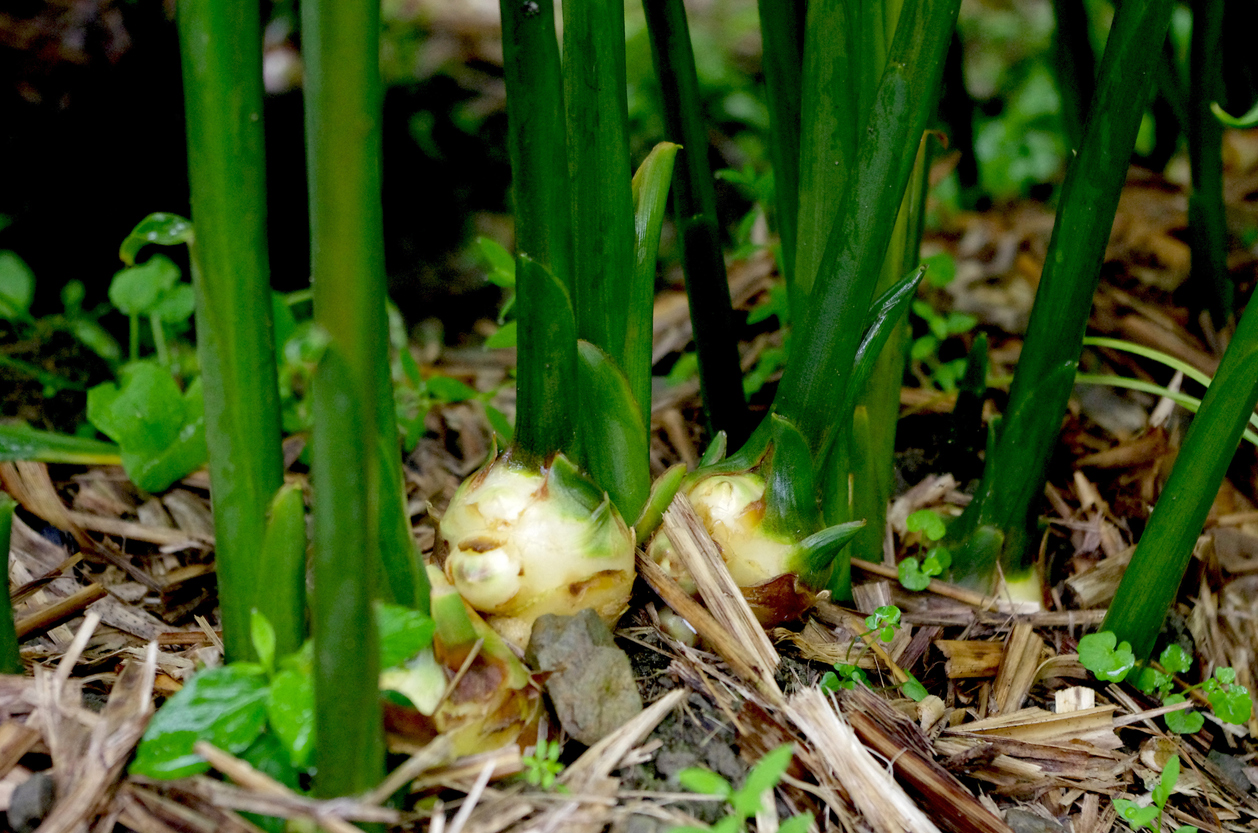
Plant ginger outdoors in early spring after the last frost, when nighttime temps won’t fall below 50 degrees Fahrenheit. Some gardeners start ginger inside in pots and then transplant it outside when temperatures warm up.
Ginger likes a relative humidity of between 40 and 50 percent. To boost humidity, mulch around the plants with wood chips, which absorb irrigation water and release it into the air. If you’re growing the plant indoors in a pot, you may need to spritz it daily to provide the moisture it needs. Alternatively, place the pot over a tray filled with water and pebbles.
Prune Your Ginger
If you live in an area where ginger overwinters, prune the plants in early spring. Snip off dead and dying foliage before new growth appears. Cut off any stems that flowered the previous year.
Harvesting Ginger
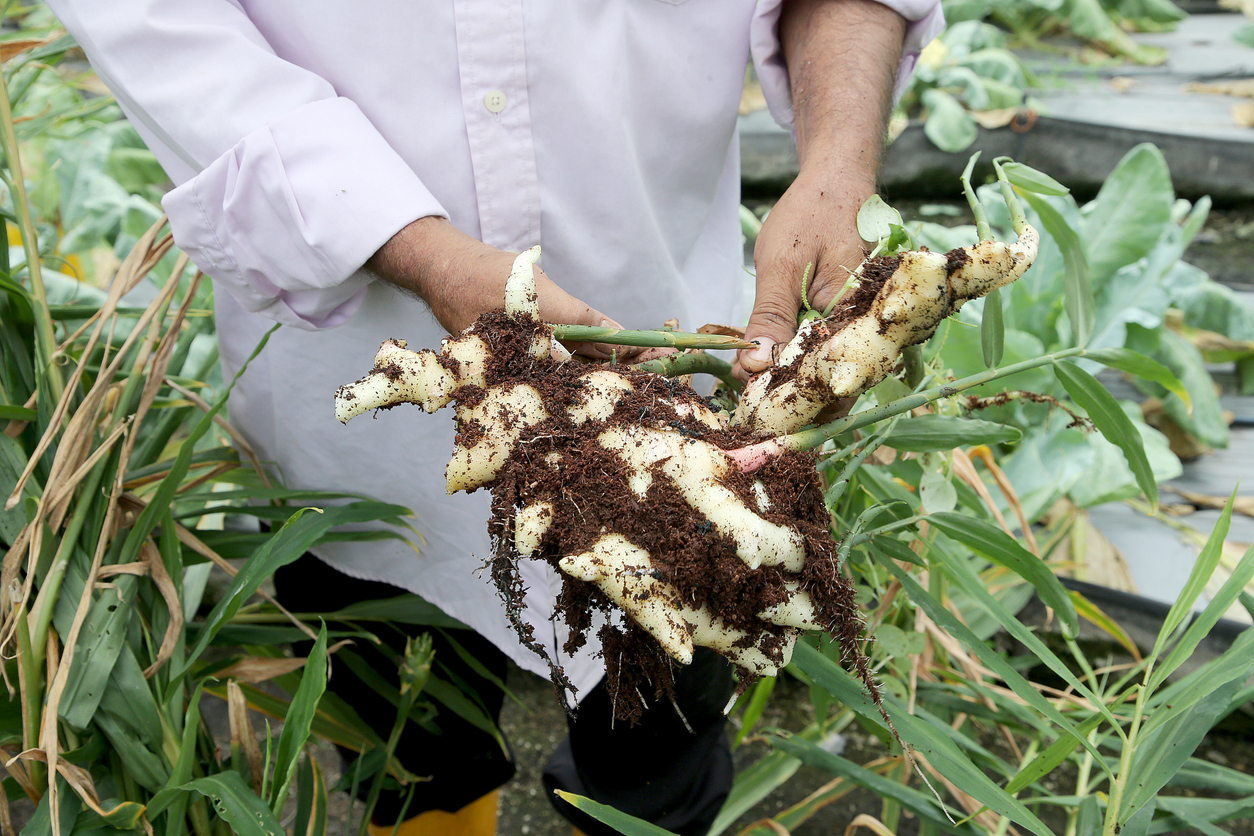
Of course, the best part of growing ginger is harvesting it so you can add it to recipes! Ahead, learn how to harvest ginger.
When is the best time to harvest ginger?
Ginger typically requires 8 to 10 months to reach full maturity, meaning that spring-planted ginger will be ready to harvest in late fall, before first frost. Gardeners who live in cooler climates where the growing period is shorter, however, might be able to harvest young ginger roots after 3 or 4 months, or bring pots indoors to give plants a few more months of growing time before harvest.
How do you harvest ginger?
There are two ways to harvest ginger: You can dig up the entire rhizome at any stage of the growth cycle, or you can cut off small pieces of the root as needed, keeping the plant alive.
If you’re taking up the whole plant, just dig it up, cut off the stem, and rinse the rhizome under cool water. To remove just a piece, dig down around the rhizome and carefully cut off a section, leaving the remainder of the root in the ground. As long as a 2-inch or larger piece of rhizome remains attached to the stalk, it will continue to grow.
How do you store ginger plants?
If your ginger is in a pot outdoors, bring it inside before the first frost hits. Put it in a place that gets indirect light. Keep the soil moist, and spritz the leaves every couple of days.
How do you store harvested ginger?
Fresh ginger can be kept in the fridge or freezer. Unpeeled, it will last 3 weeks in the fridge or 6 months in the freezer if stored in a Ziploc bag.
You can also dehydrate ginger. Simply peel and thinly slice the roots, set your dehydrator to 95 degrees Fahrenheit, and then dehydrate for 8 to 12 hours until the ginger is crisp.
Propagating Ginger
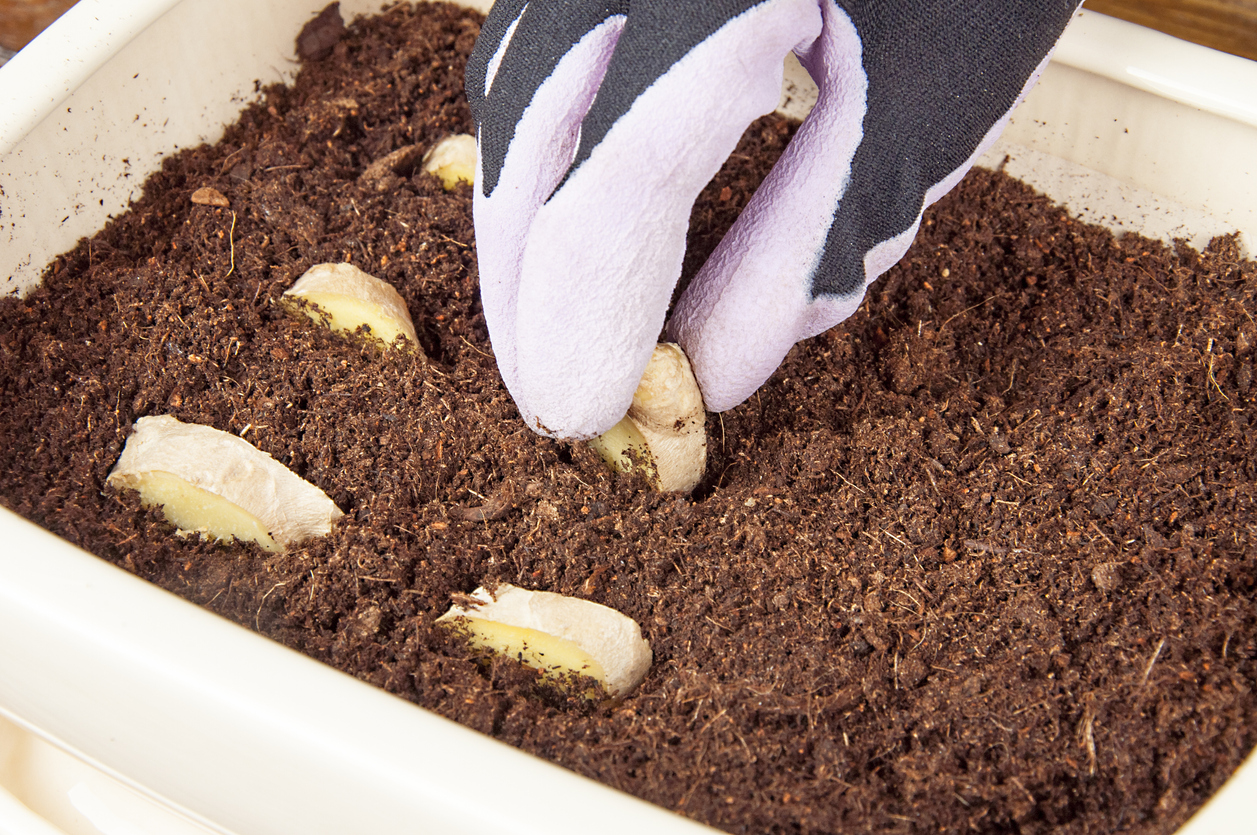
Make more ginger plants by following these easy steps:
- Dig up a rhizome, or part of a rhizome.
- Cut the rhizome into 1- to 2-inch-long pieces, each with two or three nodules.
- Allow pieces to dry in a cool location for 24 to 48 hours.
- Plant the nodules with the buds facing up.
Potential Pests and Diseases
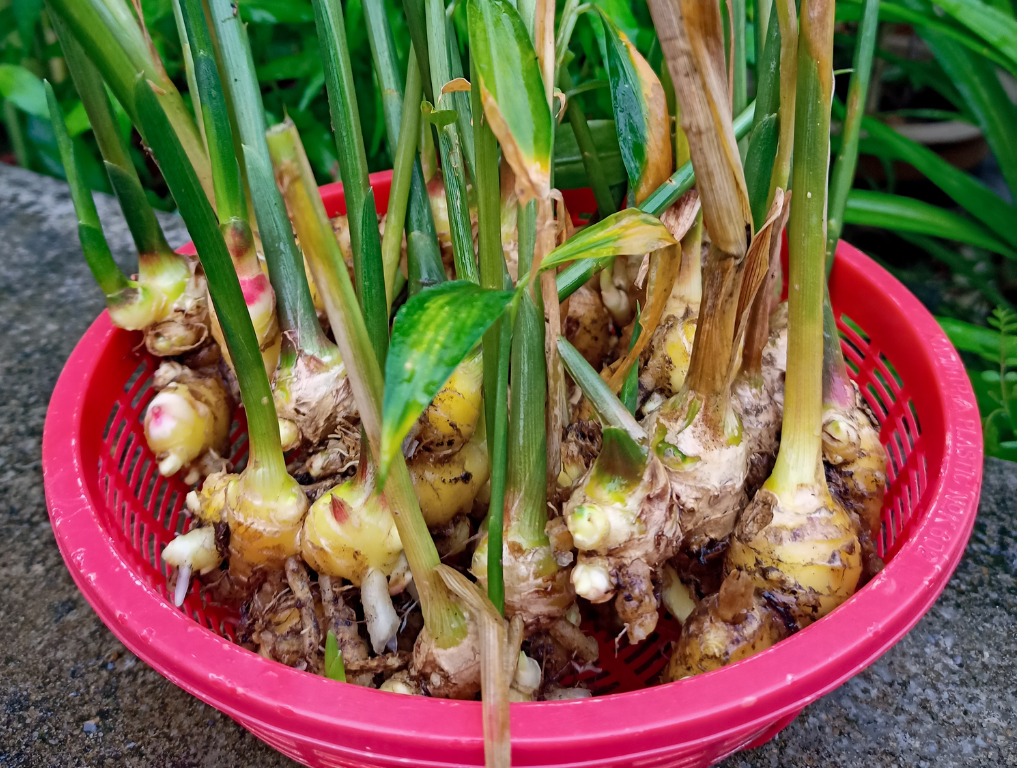
It turns out that humans aren’t the only species that like ginger plants. A rather sizable list of bugs can trouble these plants, including: ants, aphids, armyworms, cardamom thrips, Chinese rose beetles, cutworms, soft scales, Fijian ginger weevils, fungus gnats, mealybugs, red spider mites, root-knot nematodes, and yellow woolly bear caterpillars.
Of these, root-knot nematodes are among the most problematic; combat them by adding beneficial nematodes to your soil. Many of the other pests can be deterred by using neem oil.
Ginger is also susceptible to bacterial wilt and root rot. Treat wilt by removing damaged leaves and spraying the plants with a bactericide/fungicide. For root rot, cut off and discard the portion of the rhizome that has rotted, and make sure that your plants aren’t sitting in too much water.
Safety Considerations
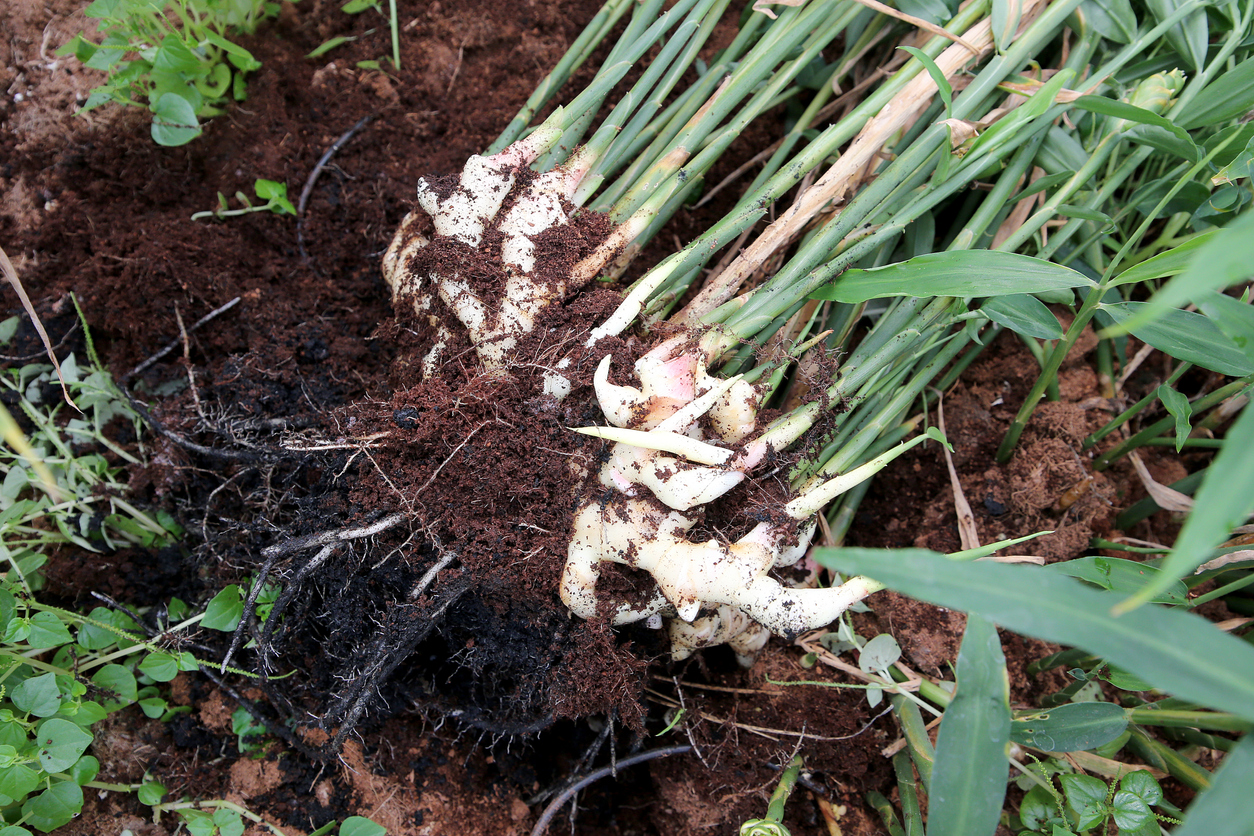
No part of the ginger plant is toxic to humans or pets. In fact, ginger has been used medicinally for centuries to treat colds, flu symptoms, and headaches. If the rhizome is eaten in huge quantities, it can cause gastrointestinal upset, but it’s harmless in the quantities typically used in cooking or for health reasons.
Interested in growing other tropical plants? Check out our guides on growing hibiscus, lemongrass, and citronella.
